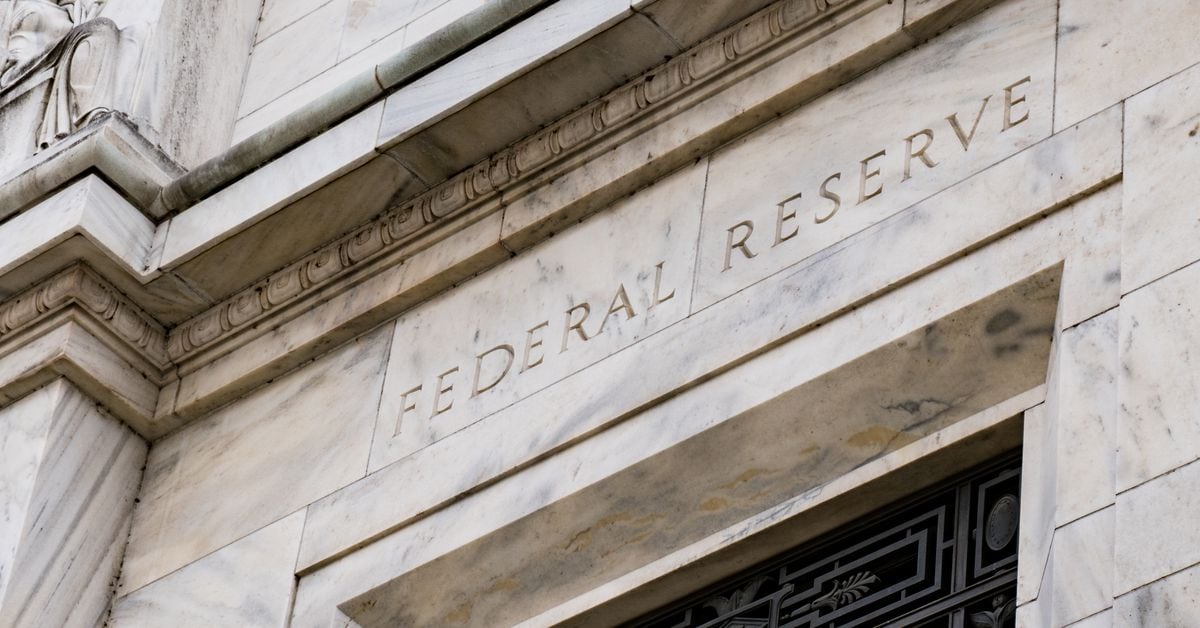Market Wrap: Cryptocurrencies Pull Back Amid Inflation and Geopolitical Risk

Most cryptocurrencies traded lower on Wednesday as concerns about inflation and geopolitical tensions emanating from Russia's invasion of Ukraine kept some buyers on the sidelines.
U.S. Federal Reserve Chairman Jerome Powell said on Wednesday the central bank is on track to start raising interest rates this month. "So far, we've seen energy prices move up further and those increases will move through the economy and push up headline inflation, and also they're going to weigh on spending," Powell said during his testimony before the U.S. House Financial Services Committee.
The Thomson Reuters Core Commodity Index is up 30% over the past six months, retracing roughly 50% of its decade-long downturn. Further, the price of WTI crude oil has risen by 20% over the past week and reached a decade high above $100 per barrel. The surge in commodity prices could point to slower economic growth and greater market volatility.
Meanwhile, Russia continued to mount missile strikes on Ukraine and to advance its troops on Ukraine despite ongoing negotiations. So far, talks between Russian and Ukrainian officials have not led to a ceasefire.
In crypto markets, BTC spot trading volume is starting to decline from the Feb. 24 spike. The ratio of buy-to-sell volume has been neutral.
Still, some indicators have shown a greater capacity to spend among bitcoin traders, which could trigger an increase in buying volume.
Analysts are monitoring signs of potential buying power among crypto traders, which could lead to a rise in BTC's price.
In down markets, crypto traders typically increase their holdings of stablecoins relative to bitcoin. Stablecoins are a proxy for traditional dollars in crypto markets, and are often used as a vehicle for entering and exiting bitcoin positions.
Theoretically, a decline in the stablecoin supply relative to the total bitcoin supply could eventually reach a turning point, assuming that traders are comfortable with buying on price dips.
The chart below shows the stablecoin supply ratio (SSR). The ratio is adjusted to demonstrate when levels have reached an extreme, which typically coincides with peaks and troughs in price. Currently, the SSR is not at an extreme low but has risen with price over the past week. That could point to "the increased potential to push the price of bitcoin higher," according to Glassnode.
Still, it remains to be seen whether SSR is a leading or lagging indicator, which means a trader's decision to hold stablecoins or bitcoin could be sensitive to sudden price changes.
Terra’s LUNA passes ether to become second-largest staked asset: A price surge in Terra’s LUNA token over the past week has made it the second-largest staked asset among all major cryptocurrencies in total value staked. LUNA surpassed ether (ETH), which has just over $28 billion in staked value at the time of writing. Cross-chain protocol Orion.money holds over $2 billion in staked LUNA, the largest among all staking applications that support LUNA. Its 43,000 stakers generate nearly 7% in yields, according to CoinDesk’s Shaurya Malwa. Read more here.Ukraine expands crypto donations to accept dogecoin: Ukraine said it would now accept cryptocurrency donations in dogecoin (DOGE) from supporters of the conflict with Russia – and tagged the billionaire and DOGE promoter Elon Musk in the tweet announcement. Mykhailo Fedorov, Ukraine’s vice prime minister and minister of digital transformation, tweeted the news on Wednesday morning, along with the country’s official DOGE wallet address in an effort to solicit donations in the dog-themed cryptocurrency, reported CoinDesk’s Tracy Wang. Read more here.IMA financial plans to start selling NFT insurance in decentraland: IMA Financial Group, a large U.S. insurance broker and wealth management firm, is opening a research and development facility in Decentraland, the Ethereum-based virtual world where Wall Street megabank JPMorgan recently launched. Denver-based IMA’s foray into the metaverse, dubbed “Web3Labs,” was driven by the rapid growth of the non-fungible token (NFT) market, said Justin Jacobs, senior vice president of marketing at IMA Financial Group and architect of Web3Labs, reported CoinDesk’s Ian Allison. Read more here.
Lawmakers Raise Alarm on Crypto for Sanctions Evasion as Experts Cast DoubtDigital Currency Group Authorizes $250M Buyback for Its Grayscale TrustsUkrainian Flag NFT Raises $6.75M for Country’s War EffortsBitcoin Climbs to $45K Early Wednesday Before Quickly Retreating
Digital assets in the CoinDesk 20 ended the day lower.
Sector classifications are provided via the Digital Asset Classification Standard (DACS), developed by CoinDesk Indices to provide a reliable, comprehensive, and standardized classification system for digital assets. The CoinDesk 20 is a ranking of the largest digital assets by volume on trusted exchanges.
